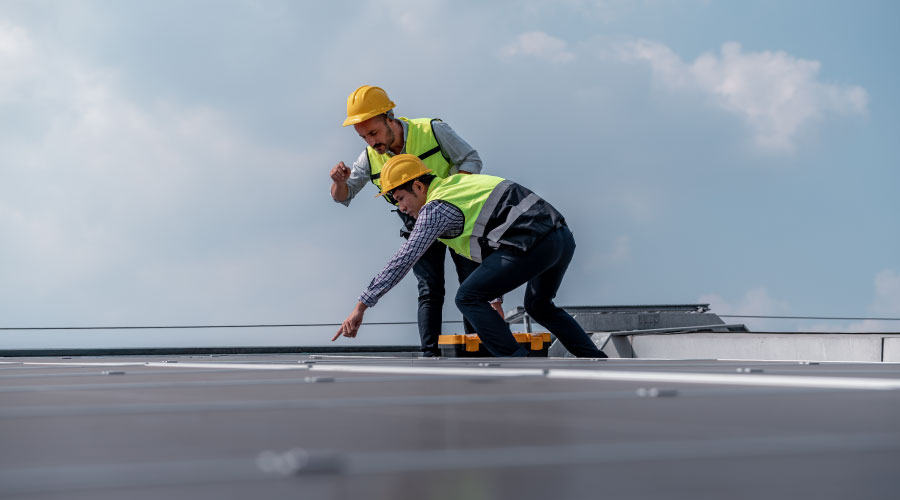How Weather and Maintenance Impact Roof Longevity
4. Weather Considerations
All of the current roof materials and systems have ambient temperature constraints. Application of these materials in conditions not suitable to the material's constraints (too hot, too cold, in wet weather) will contribute to premature failure. The recent surge in the industry to the use of cold adhesive materials has increased the need to provide material application in proper temperature ranges.
5. Timely Maintenance
Contrary to popular opinion, the maintenance-free roof system does not exist. All types of roofs require a certain level of attention. In fact, from the moment of installation, the roofing system undergoes continuous deterioration. Extreme temperature fluctuations as well as snow, ice, hail and wind prevail upon the roofing surface. In short, the elements are the biggest deterrents to the roof system over its service life. Traffic on the roof and the installation of mechanical and other equipment can also cause physical damage that contributes significantly to roofing failures.
Roofs are exposed to the elements 24 hours a day, every day of the year. In summer, the roof surface temperature can exceed 200 degrees F. In winter, the roof surface can be exposed to snow and ice for weeks at a time. And in spring and fall, the roof faces winds stronger than any that other exterior building components are exposed to.
The most important reason to implement an annual roof maintenance program is to extend the service life of the existing roof system. Comprehensive repairs not only make the roof last longer, but also provide cost savings to the facility executive. A good maintenance program will detect or prevent leaks and other roofing problems. Problems are addressed at their initial stage, minimizing or eliminating damage to interior furnishings, equipment, building materials and finishes. In this way, the facility executive avoids expenditures for such items as deck damage repair and associated costs resulting from typical maintenance practices, which simply respond to leaks. Development of maintenance guidelines is based on the profile of the roof systems in place.
Roof maintenance is like mortgage insurance. A manageable yearly expense could provide the dividend of a roof system that meets or exceeds its anticipated service life. For instance, a 20-year roof system will protect the interior operations of the building for the full 20 years; any service life that extends beyond this time could be considered free money. Every year that the roof system is extended is an additional year that the facility executive does not have to spend a substantial amount for remedial roof construction.
John D'Annunzio, president of Paragon Consultants and Paragon Roofing Technology, Inc., has done extensive research in roofing technology and has published three books about roofing. D'Annunzio is a member of the American Institute of Architects, Roof Consultants Institute, ASTM, National Roofing Contractors Association, Sealant Restoration and Waterproofing Institute, Construction Specification Institute and BOCA. 
Related Topics:














